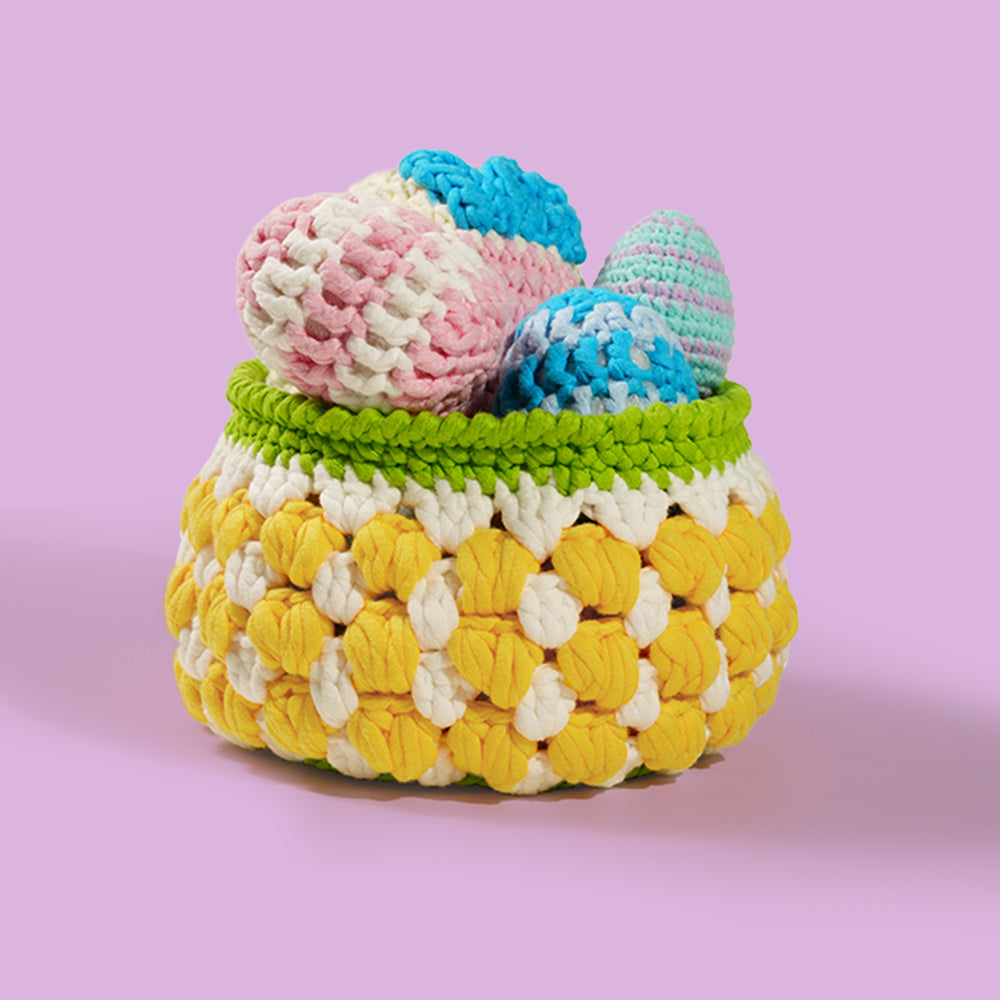Top 5 Mistakes When Changing Yarn Colors (And How to Avoid Them)
Introduction
Changing yarn colors is one of the best ways to add personality, dimension, and visual interest to your crochet projects. Whether you’re working on bold stripes, soft gradients, or character-themed creations, switching colors is essential.
But let’s be honest—it can go very wrong.
Suddenly your rows are crooked, the seams are bulky, and there’s a loose tail unraveling in the corner.
Sound familiar?
The good news is, most color-change issues come from a few common mistakes. In this post, we’ll break down the top 5 most frequent errors when changing yarn colors in crochet, explain why they happen, and show you how to fix or avoid them entirely.
Let’s level up your color game!
1. Cutting and Rejoining at Every Color Change
The Mistake:
Many beginners think they must cut the yarn every time they switch colors. This leads to dozens (if not hundreds) of yarn tails to weave in, bulky seams, and a frustrating finishing process.
Why It’s a Problem:
-
Leaves your work filled with knots and ends
-
Creates a stiff “spine” on the edges
-
Wastes time and yarn
How to Avoid It:
-
Carry the yarn up the side if you’ll return to that color soon.
-
For projects with clean color blocks, use invisible joins instead of breaking the yarn each time.
-
If you must cut, weave ends as you go using techniques like the crochet-over method to reduce finishing time.
2. Changing Colors at the Wrong Time in the Stitch
The Mistake:
Completing the entire stitch and then pulling through the new yarn at the start of the next stitch. This creates a visible color “bump” or uneven transition.
Why It’s a Problem:
-
The old color bleeds into the new stitch
-
Looks especially messy in contrast or striped patterns
How to Avoid It:
Always change yarn in the last yarn over of the stitch before the new color begins.
Example:
For single crochet, insert hook, yarn over with old color, pull up a loop, yarn over and pull through with new color.
This creates a clean break and seamless color transition.
3. Ignoring Tension When Switching Colors
The Mistake:
Yarn changes can tighten or loosen your stitch tension without you realizing it. The new yarn may be a different brand, fiber, or simply handled differently.
Why It’s a Problem:
-
Uneven rows
-
Warped edges
-
Unintentional puckering or stretching
How to Avoid It:
-
Always check gauge when switching yarn types or brands.
-
Use the same hook and consistent hand tension.
-
Swatch first, especially if your project uses many yarn changes (like temperature blankets or graphghans).
4. Changing Colors in the Middle of a Row Without Planning
The Mistake:
Switching colors mid-row without a stitch pattern or design to support it. This leads to jarring breaks or misplaced color patches.
Why It’s a Problem:
-
Visually unappealing
-
Disrupts symmetry
-
Makes it hard to match on future rows
How to Avoid It:
-
Map your color placement ahead of time.
-
Use stitch markers or graph paper if following a pattern.
-
If working in rows, consider fading techniques (like moss stitch blending) or planned striping instead of abrupt mid-row switches.
5. Not Securing Yarn Tails Properly
The Mistake:
Failing to securely weave in or anchor the yarn ends after changing colors. Over time, they may come loose, unravel, or show through the work.
Why It’s a Problem:
-
Project durability is compromised
-
The final piece looks messy
-
Ends might peek through to the front
How to Avoid It:
-
Weave tails in using a yarn needle in at least 2 directions.
-
Use the “crochet over the tail” method during the next few stitches.
-
For slippery fibers like cotton or bamboo, add a gentle knot before weaving in (optional but helpful).
Bonus Tips for Flawless Color Changes
-
Use Magic Knots sparingly: they're great for smooth joins but not ideal for all fibers.
-
Test color order before committing—some combinations blend better than others.
-
Block your project after finishing. This helps even out tension and softens harsh transitions.
-
Use invisible join for a cleaner edge in flat color blocks.
-
When working in the round, stagger color changes to avoid creating a “seam.”
Q&A Section
Q: Can I mix yarns from different brands when changing colors?
A: Yes, but make sure the weight, texture, and fiber content are similar. Always swatch first!
Q: How do I hide the yarn tail when changing colors in amigurumi?
A: Use a tapestry needle to run the tail through the inside of the body, following the stitch path. Pull gently to prevent distortion.
Q: Is it better to change color at the beginning or end of a row?
A: Beginning is easier to hide in flat projects. For stripes, the last yarn-over of the final stitch in the previous row is best.
Q: Why does my color change line look jagged in the round?
A: That’s called a “color jog”. Use a jogless stripe technique: slip stitch at the end of the round before switching, or adjust stitch height to match rounds.
Conclusion
Color changes don’t have to be stressful. With a little preparation and a few smart techniques, you can avoid the most common mistakes—and make every transition in your project look smooth, intentional, and polished.
Whether you’re working on a bold striped blanket, a subtle ombré cardigan, or a rainbow of granny squares, mastering these color-change tips will take your crochet skills to the next level.
So next time you're about to change yarns—pause, breathe, and stitch with confidence. Your crochet will thank you.
